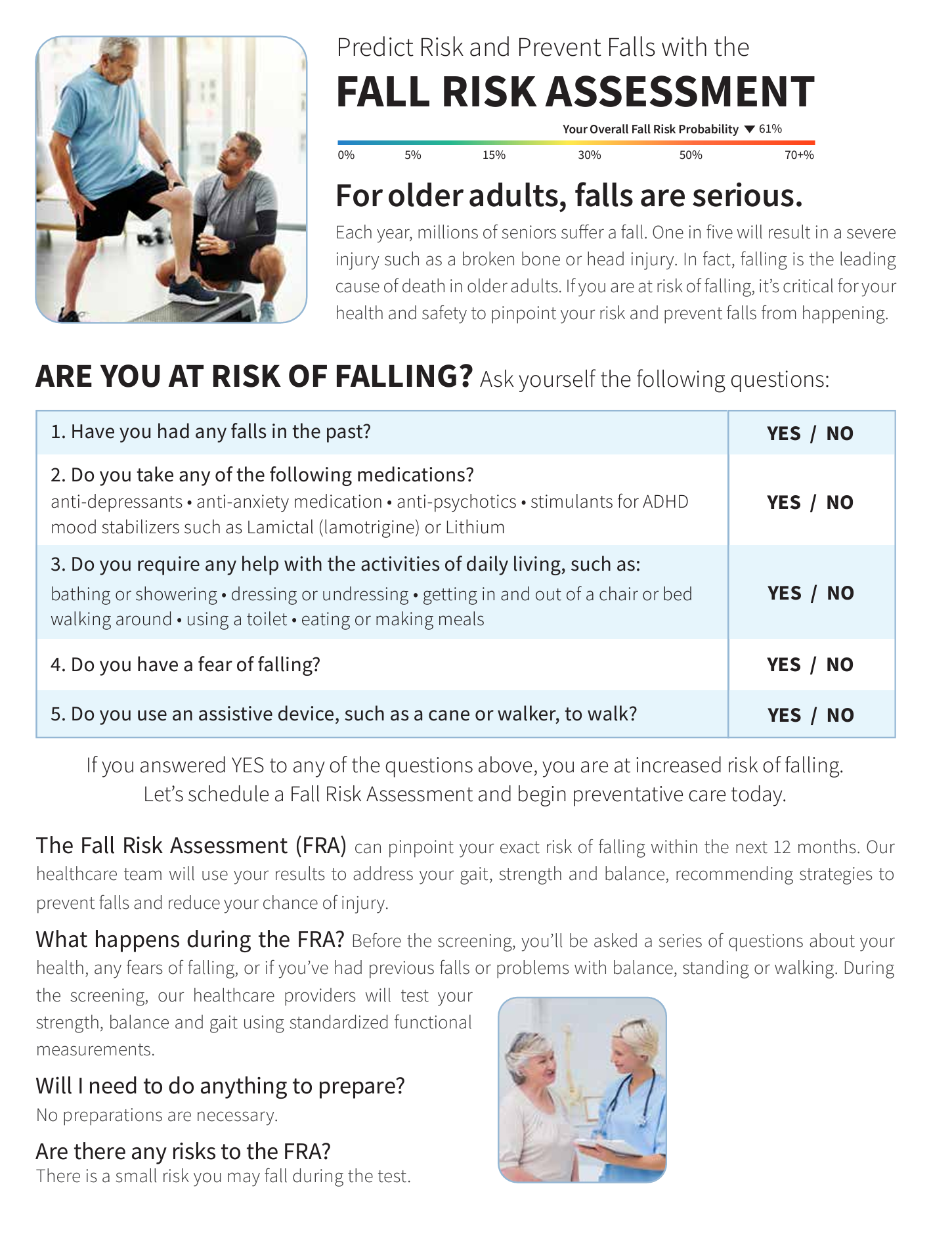Getting My Dementia Fall Risk To Work
Getting My Dementia Fall Risk To Work
Blog Article
Not known Facts About Dementia Fall Risk
Table of ContentsUnknown Facts About Dementia Fall RiskThe Ultimate Guide To Dementia Fall RiskFacts About Dementia Fall Risk UncoveredDementia Fall Risk Fundamentals ExplainedDementia Fall Risk Things To Know Before You Buy
Make sure that there is an assigned location in your clinical charting system where staff can document/reference ratings and record relevant notes associated to drop avoidance. The Johns Hopkins Autumn Risk Analysis Device is one of numerous tools your team can utilize to aid stop unfavorable clinical events.Patient drops in health centers prevail and debilitating damaging events that continue despite years of effort to lessen them. Improving communication throughout the evaluating registered nurse, care group, patient, and person's most involved friends and family members may reinforce fall avoidance initiatives. A team at Brigham and Women's Hospital in Boston, Massachusetts, looked for to establish a standard fall avoidance program that centered around boosted interaction and patient and family members engagement.

The technology team stressed that successful implementation relies on patient and team buy-in, integration of the program right into existing operations, and fidelity to program procedures. The group noted that they are facing how to ensure connection in program execution during periods of situation. During the COVID-19 pandemic, for instance, a rise in inpatient drops was related to restrictions in person interaction along with limitations on visitation.
Examine This Report on Dementia Fall Risk
These events are generally considered avoidable. To execute the intervention, companies require the following: Access to Autumn pointers resources Autumn TIPS training and retraining for nursing and non-nursing personnel, consisting of new nurses Nursing operations that enable client and family members engagement to carry out the drops analysis, ensure use the prevention plan, and perform patient-level audits.
The results can be very destructive, usually increasing client decline and causing longer medical facility remains. One study approximated keeps boosted an extra 12 in-patient days after a client fall. The Loss TIPS Program is based upon appealing clients and their family/loved ones across 3 primary processes: assessment, individualized preventative treatments, and bookkeeping to make sure that clients are taken part in the three-step autumn prevention procedure.
The client assessment is based upon the Morse Autumn Range, which is a verified fall threat evaluation tool for in-patient hospital setups. The scale consists of the 6 most typical reasons patients in medical facilities drop: the individual fall background, risky conditions (consisting of polypharmacy), use IVs and various other external gadgets, mental condition, gait, and wheelchair.
Each risk aspect relate to several workable evidence-based interventions. The registered nurse develops a plan that includes the interventions and is noticeable to the treatment team, individual, and family on a laminated poster or published visual aid. Registered nurses establish the strategy while consulting with the person and the person's their explanation household.
An Unbiased View of Dementia Fall Risk
The poster works as a communication tool with other members of the patient's care team. Dementia Fall Risk. The audit component of the program includes examining the individual's understanding of their threat variables and avoidance strategy at the system and hospital degrees. Nurse champs conduct a minimum of five individual interviews a month with clients and their households to look for understanding of the fall prevention strategy

An estimated 30% of these falls result in injuries, which can vary in intensity. Unlike other adverse occasions that need a standardized scientific reaction, loss prevention depends very on the requirements of the patient.
Dementia Fall Risk Things To Know Before You Get This

Based upon auditing outcomes, one site had 86% compliance and 2 sites had over 95% conformity. A cost-benefit evaluation of the Fall pointers program in eight health centers estimated that the program expense $0.88 per person to execute and caused savings of $8,500 per 1000 patient-days in direct costs associated to the avoidance of 567 falls over three years and 8 months.
According to the development team, companies interested in executing the program must perform why not try this out a readiness assessment and falls prevention spaces evaluation. 8 In addition, organizations ought to make sure the essential infrastructure and workflows for application and establish an execution strategy. If one exists, the company's Fall Prevention Job Pressure need to be entailed in planning.
4 Simple Techniques For Dementia Fall Risk
To start, companies should make certain completion of training modules by nurses and nursing aides - Dementia Fall Risk. Medical facility personnel must analyze, based upon the requirements of a medical facility, whether to use an electronic health and wellness document printout or paper variation of the loss avoidance plan. Applying teams should recruit and train nurse champions and develop processes for auditing and coverage on loss information
Team need to be included in the process of revamping the workflow to involve individuals and family in the analysis and prevention strategy process. Systems must be in area to ensure that units can comprehend why a fall took place and remediate the cause. Extra particularly, registered nurses ought to have networks to offer recurring comments to both team and unit management so they can adjust and enhance fall prevention workflows and interact systemic troubles.
Report this page